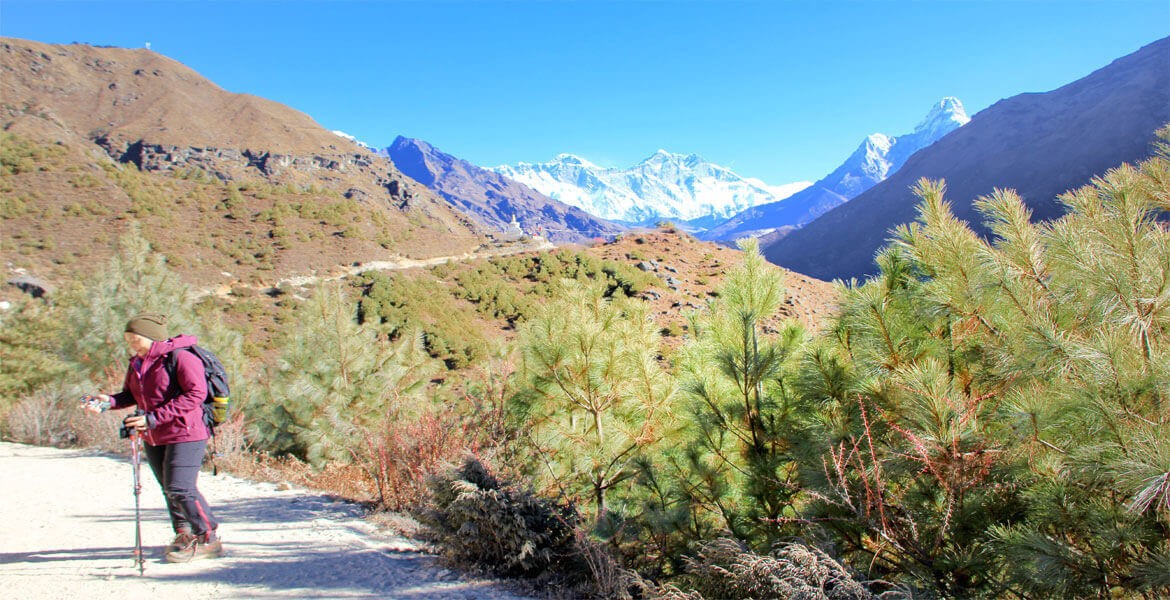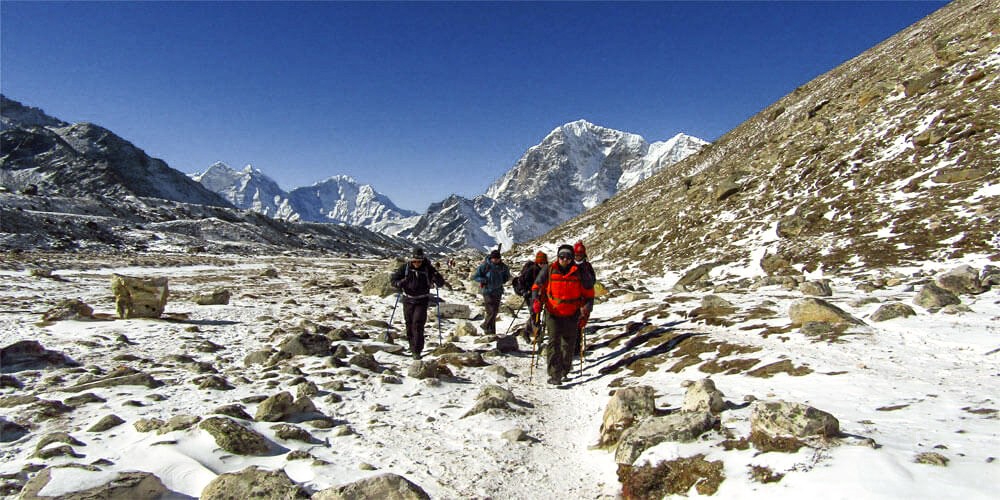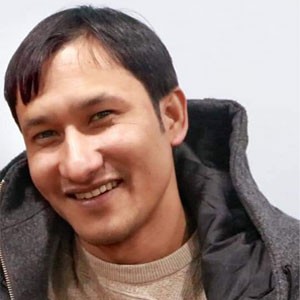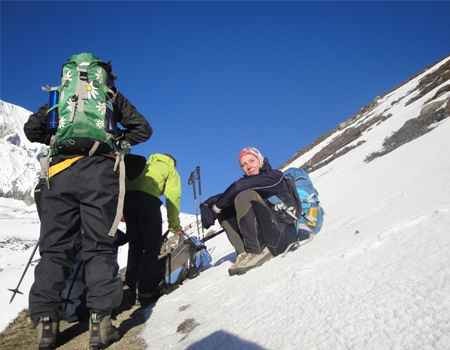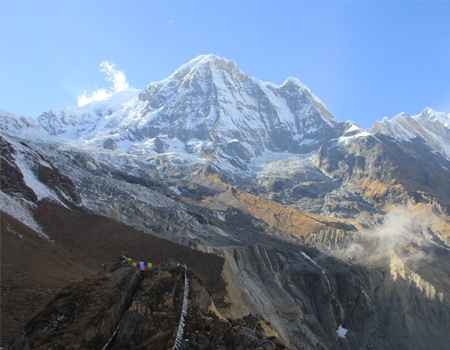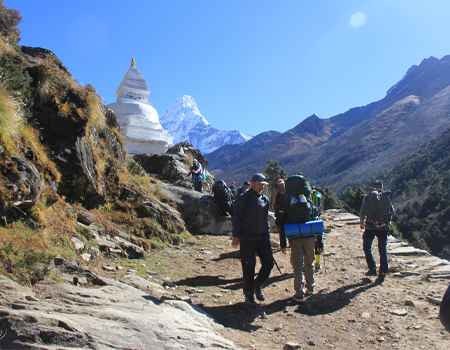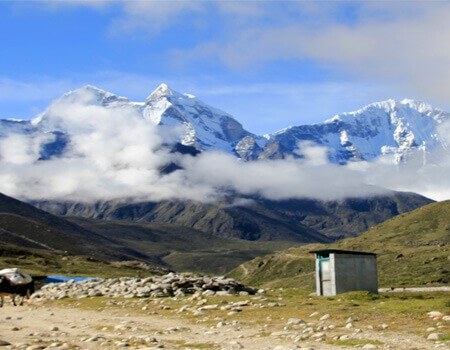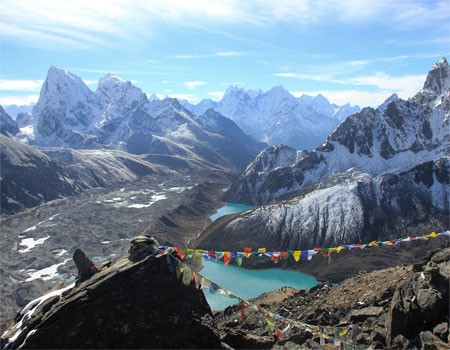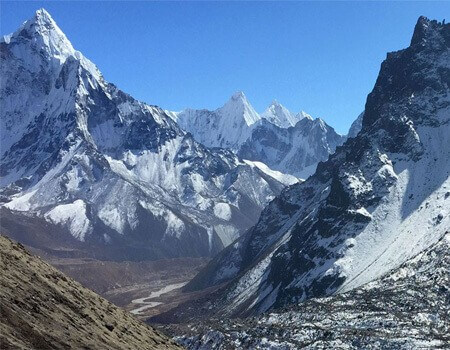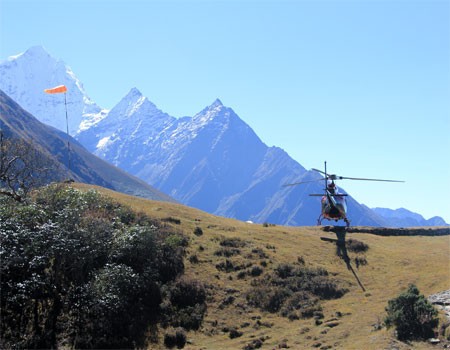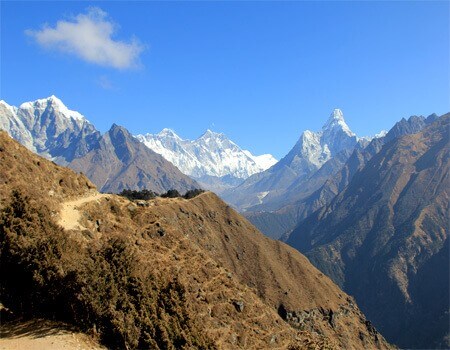Trekking Gear for Female Everest Base Camp Trekkers
Clothing – the body wear should be flexible and warm for the Female Everest Base Camp Trekker; you can see the essential gear list below:
Head Wears
- Sun hat (It protects you from the direct sun heat during the day)
- Warm woolen or fleece hat (It protects from cold wind and temperature for your ears and head)
Body Wear
- Buff for the neck and dust protection
- 3-4 trekking shirts (long and half sleeves)
- Thermal layers
- Fleece high neck cover t-shirt and jacket
- A few breathable underwear and Bras
- Windproof jacket
- Down jacket
- Liner gloves and windproof gloves
- Leggings
- 2-3 Trekking pants (zip-offs recommended)
- Down trousers (you can wear them while you are in the lodge)
Rain Gear for Female Everest Base Camp Trekker
The best times for the Everest base camp trek are from March to May in spring and September to November in autumn. Although, the first two weeks of September and late May might have some rainy days. The weather in the mountains is unpredictable, so you need to have rain gear with you whenever you go on the Everest base camp trip. So, do not forget to pack the rain gear that has been mentioned below:
- Rain Jacket protects the upper body and will be easy to walk
- Waterproof trouser protects the lower body from rain and make it easy to walk
- Rain poncho covers your body and daypack, so it protects your day equipment and valuables from the rain
Foot Wear for Female EBC Trekker
- Excellent quality hiking boot (size should be fit, and use them for a few days before starting the trek to avoid blisters)
- 6-7 pairs of trekking socks (do not wear sweaty socks in the higher region)
- Sports shoes for the camp
- Water sandals for the bathroom
- Down booties for the night
Other Essential Gears
- UV protection polarized sunglasses
- Trekking poles
- Water bottle or camelback
- Head torch
- Extra camera battery
- Multi-use power socket
- Power bank for battery charging
- NTC or NCELL SIM card with Internet data
- Gaiters (not compulsory, but it helps with mud and snow)
- Sleeping bag and liner
- Toe warmer (if you are on a trek after November to February)
- Plastic bags for washing wet/dirty clothes and to protect your valuables from the rain
- Day snacks like chocolate bars, energy bars, and nuts
- Insurance copy (if you have any problems from the altitude effect and others in the mountain, it will be easy to inform your travel insurance company, and do not forget to leave one copy for your trekking organizer)
- Books to read in the evening and other free times
- Notebook (if you would like to write about the daily experience)
- Playing cards to spend time
- Soft pillow (you will get a pillow on every bed, but it might not be soft everywhere.
- Earplugs (Some other trekkers might snore at night, so earplugs help a lot in this case)
- Toiletries and Creams for Female EBC Trekkers
- Hiking towel to swipe sweat while walking
- Quick dryer towel
- Talcum power
- Baby wipes
- Sun lotion (SPF 30 plus)
- Travel-size shampoo, soap, and hair conditioners
- Toothpaste
- Hand sanitizers
- Lip balm
- Tampons
- Sanitary pads
- Nail clipper
- Tissue
- Toilet rolls
- Moisturizers cream
Duffel Bag or Rucksack to Pack All Gear for Female Everest Base Camp Trekker
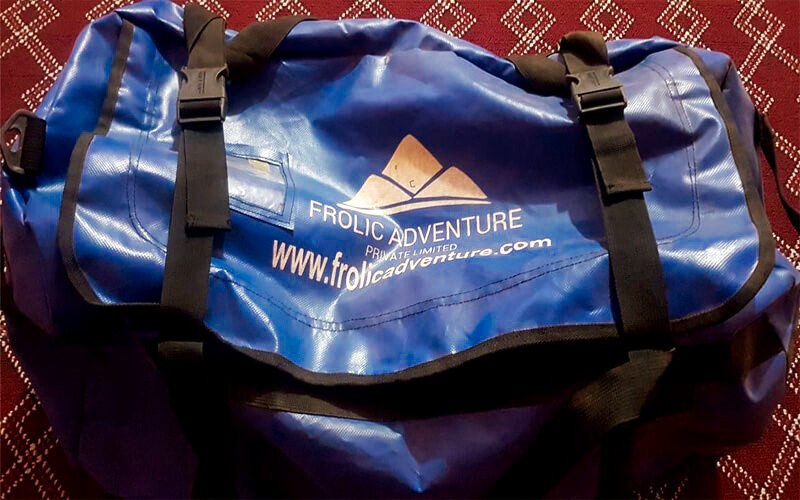
Main bag for equipment
If you book a trip to the Everest base camp with Frolic Adventure, we provide you with a duffel bag. It is to manage all the essential trekking gear inside this main backpack.
A small aircraft flight to Lukla joins the Everest base camp trekking trail, so the flight has a weight limitation. You can take 15kg, including the main bag and the hand carry. You can pay an extra amount, which is charged per kg, for the overload, but please manage to stick to the weight limit.
You can manage the weight of the equipment by buying toiletries and creams in Lukla or Namche Bazar. The above-mentioned trekking gear should weigh no more than 15kg. You might have some city wear and a travel suitcase from home; you can keep them at the hotel in Kathmandu, which you do not need for the trek.
A trekking porter will carry your main bag during the trek, and you may not see them between one camp to the next. So, keep your day-changing clothes, rain gear, daily snacks, and a light jacket. You can put other equipment in the main bag you don't need during the day.
Daypack Packing for Female EBC Trekker
The daypack should be lightweight and comfortable to carry. It is used for daily walking from one camp to another. It includes accessories, day snacks, water bottles, light jackets, rain gear, a hat, gloves, hand sanitizers, and other valuables.
You only see the porters often during the day. Mostly, you see your bag in the lodge when you reach the camp. So, your daypack is for essential things during the walk from one place to the other.
What to Wear in the Camp during the Evening, Morning, and Night
Let's talk about wearing it at the guesthouse after you reach now. Right after you get to the lodge, change the wet clothes you wore during the walk. Hang the damp t-shirt and trekking pants somewhere to dry. Then, suitable clothes should be changed to fit the current temperature of the place.
If you are going for a shower, take off your hiking boots and wear water sandals. After the shower, wear sports shoes for the evening until you go to bed.
Wear thermal layers, tracksuits, leggings, or whatever you feel comfortable in for the night when you sleep. Sleep is essential in the high Himalayan region. It gives you more energy and keeps you fit and satisfied on the trek. A good night's sleep also helps prevent altitude sickness.
Nights are cold, so warming your feet at a high altitude takes time. Wear down booties or a hot bag to warm the feet on the bed.
Use a -20°c sleeping bag with a fleece liner on the bed. If you have your own, you can bring it from home, although you can buy or rent it in Kathmandu if you do not have it. You can cover your head and ears with a scarf or warm hat if you feel comfortable.
Due to the cold mountain temperatures, cell phones and cameras lose battery life quickly, so you can keep them inside the sleeping bag while you sleep.
First-Aid Kit Packing for Everest Base Camp Trek
A guide always takes the first-aid kit for the Everest base camp trek, but you can also pack your medicine pack.
Rehydrolite power: You sweat a lot when you wake up, so you might be dehydrated from the sun's heat and losing sweat. A regydrolite drink helps you maintain rehydration.
Altitude pills: Diamox is a famous name for the altitude pill. However, you might not get them in the market nowadays, so you can take alternative medicines in your first-aid kit—acetazolamide or acetazolamide to prevent altitude sickness.
Ductape or blister plaster: Some trekkers might get blisters due to not having many days of walking practice, or Wearing New and unfit hiking boots on the trek. If you have blisters, you can paste a blister plaster on them.
Anti-diarrhoea tablets: Some travelers in the Nepalese, Pakistani, and South American Himalayas might get travelers' diarrhea because of the Himalayan atmosphere. It does not contaminate food and drinks to cause diarrhea in the mountains, so always keep diarrhea tablets for the Everest base camp trek in your first-aid kit.
Anklet or Knee Supporter: The trekking trail has many tiny stones. If one's feet twist accidentally, an anklet can be very helpful. Likewise, a long downhill walk can hurt one's knee. So, do not forget to pack a knee supporter in your first-aid kit for the EBC trek.
Anti-cold tablets, Strepsils, and nose drops: You might have the Khumbu cough and common cold flu in the mountains. Do not forget to pack Decold/Sinex tablets, Strepsils, and Otrivin/Nasivion for the blocked nose in your first-aid kit for the trek.
Pain relief spray or lotion: If you twist an ankle or other part of your leg and have pain in any part of your body, a pain relief spray or cream is essential to carry in your first-aid box.
Paracetamol, or a painkiller, is beneficial for mild headaches, fevers, and pain during the trek.
Water purifier tablet or drops: Bottled water is expensive in the Everest region. You can buy bottled water, but if you want to manage your budget by drinking regular water, you must use purification tablets or drops before drinking it. Alternatively, you can sterilize the water using UV light.
Vitamin c tablets: Some people don't like the flavor of water purification, so vitamin c is perfect for those people. Also, vitamin C keeps you from getting into trouble with the common cold and flu during the trek.
Oximeter: An oximeter is one of the most important things you must pack in your first-aid box for the Everest base camp trek. It helps you determine your oxygen level and heartbeat at a high altitude, making it easy to understand the effects of altitude.
Washing Socks and Other Clothes During the Trek
You have some short trekking days and rest days during the Everest base camp trek to wash your socks and other small clothes somewhere. You can wash your inner garments while you are having a shower. There will be an extra place to clean outside the guesthouse, where you can wash other clothes and socks. You can go to the nearest stream to wash, but you must be careful if you are on a trek in winter. Icy stones close to the stream will be very slippery at that time.
If you dislike washing, you can ask the guesthouse for the laundry. Some guesthouses also provide laundry services for guests.
Conclusion
As mentioned above, the Everest base camp trek equipment for females is perfect, and most gear is also for male trekkers. You can use this trekking equipment for other treks in Everest and other Himalayan regions in Nepal. You can add a few pairs of clothes for a longer trek, and for a shorter trek, you can decrease them.
The equipment list above may be an incomplete packing list for the female Everest base camp trekker, but these are the essential gear. If you have heard about additional equipment from others who have already done it, you can ask us before taking it on your trek. We can suggest whether you need it or not. Also, some equipment may be different according to the season.
If you have more questions about difficulties, availability, attractions, or any other topics related to the trek, please feel free to contact us at any time through our WhatsApp or Contact Us page. We will be happy to provide you with all the essential information.
I wish you all the best and a memorable EBC trek from Nepal. If you have not booked your trip yet, you can do so from here now.
